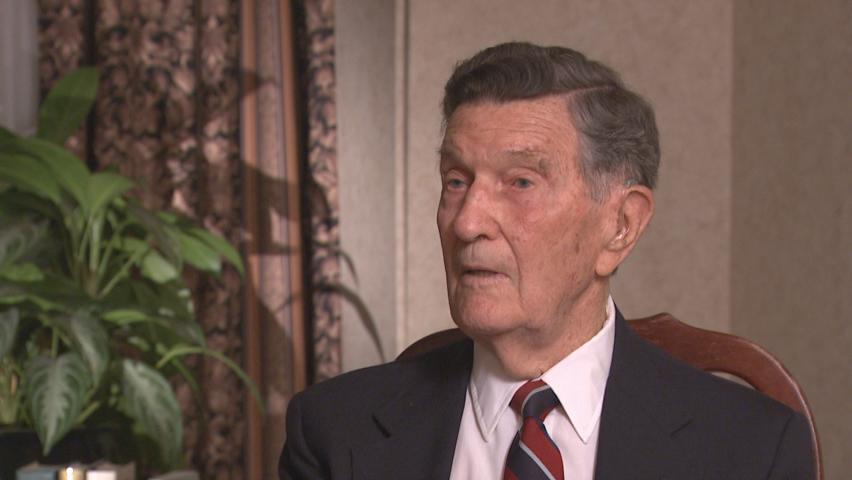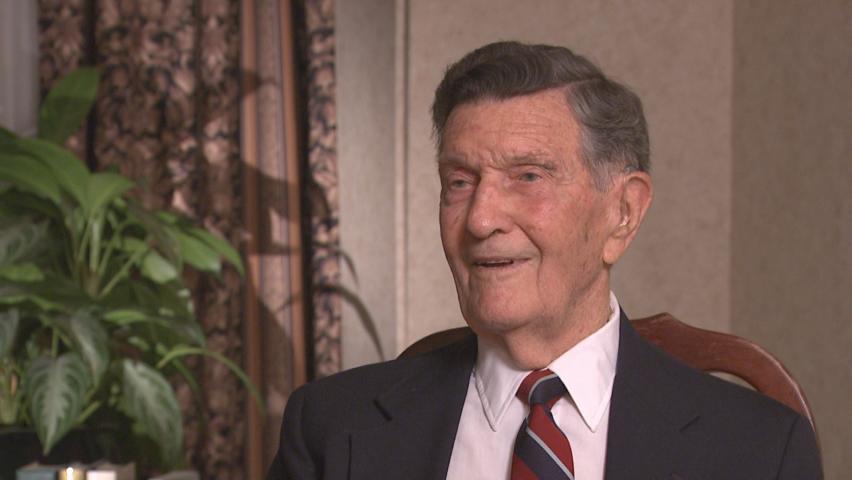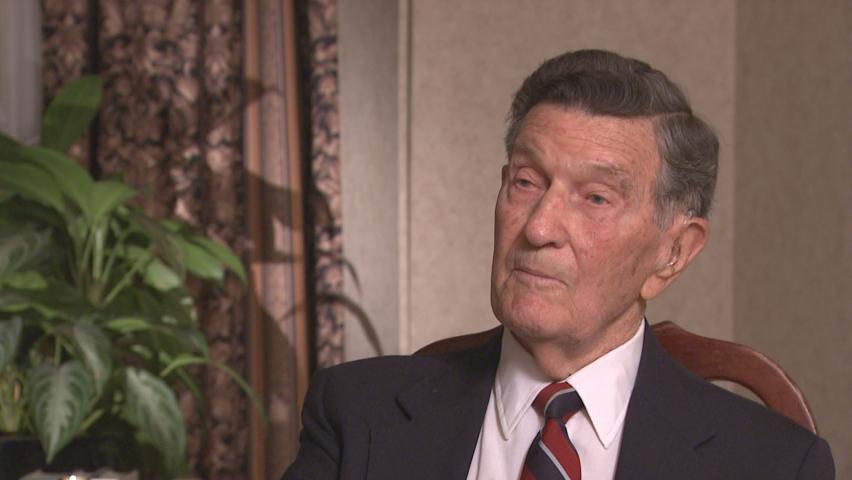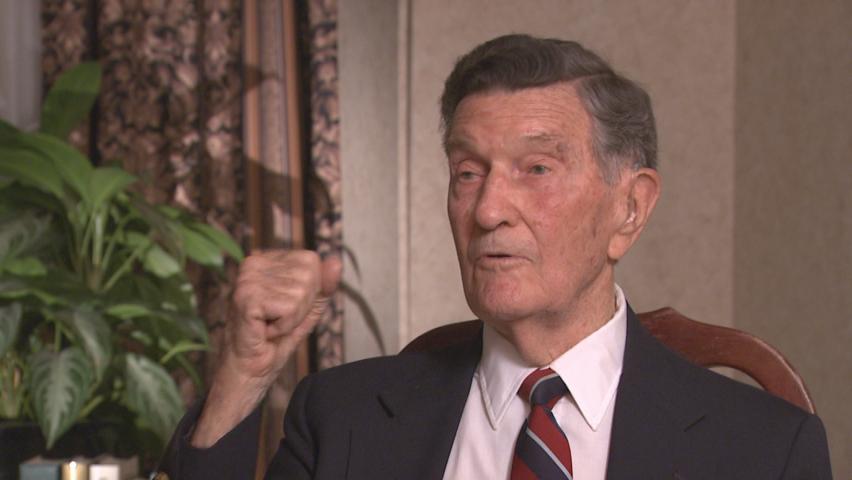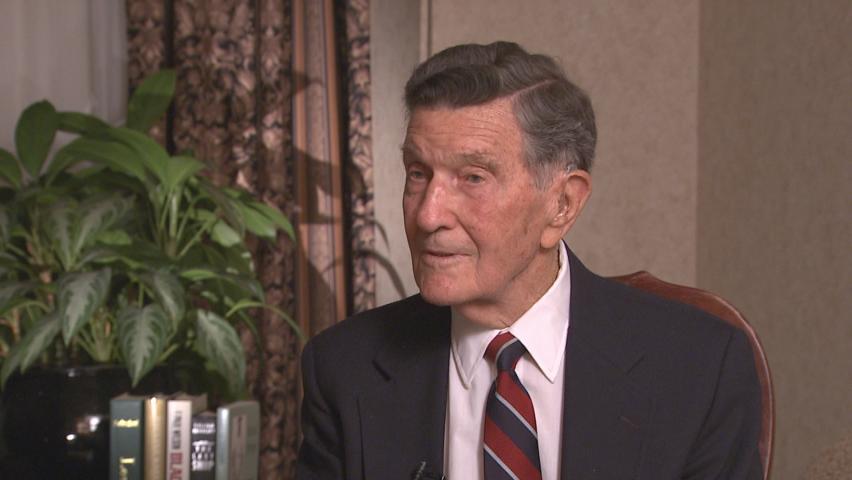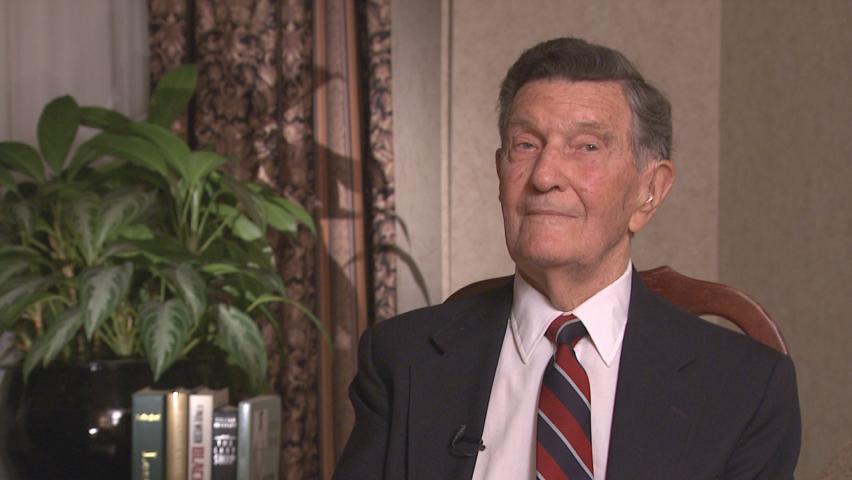Experiencing a Suicide Raid (Part 2 of 2)
Heroes Remember
Experiencing a Suicide Raid (Part 2 of 2)
The second night we went it was
exactly the same format,
a beautiful kind of night,
moonlight, clear down the fjord and
a fighter picked us up.
We were in search lights at that point so
the only thing I could do as far as
I was concerned was there
was no way we could sort of manoeuvre
away from the fighter so what we did
took them down on the dive
to the 150 foot level,
headed in towards this small fjord and
at this point the Germans knew there
was no smoke at that point so they were
firing from both sides of the fjord,
the ship was firing up the middle and
it was just a mass of anti-aircraft fire
over the ship and I said to my pilot,
“We’ll go down and through and the fighter
won’t follow us because he’s not
going to go into that mess.”
Well we went through but it wasn’t a
good bombing run because we
were really just getting rid of the fighter
so I said in effect
“Dummy run,” I’m not going to drop.
So we pulled up, went
around a second time.
Well, we must have been one of the first
ones in, down that first run because
we could see the ship and
the ship there, both the fore
and aft part of the ship had been
covered with camouflage to disguise
the shape and the size of the ship and
this would be sort of protecting them
from photographic evidence and trying
to prevent them from being attacked.
And it was covered with this when we
went through the first, pulled up,
by the time we came back on the second run,
came down to 150 feet and
went into the fjord, we had a clear run,
dropped our weapons behind the ship,
pulled up and at that point the
camouflage had been just torn apart,
it was in shreds so obviously
explosions had taken place close
enough to that aspect so we saw
at least two ships get shot down,
two aircraft and one of them was our
squadron commander who happened to be
DCT Bennett who had been the man
running the cross-Alantic ferry and
he was my squadron commander at
that point and he and his co-pilot were
able to escape and get to Sweden on
foot after they had crashed.
Another one of our air crew landed on the ice,
he couldn’t go any further,
he had been run, he landed on the ice.
They had gone off across the ice and
they made their way through into
Sweden except one of them who had
broken his ankle in the crash so
he was a POW but we lost about
fifty percent basically of the
personnel of the squadron.
And I don’t think we put the Tirpitz
out of action despite, I don’t think the
weapons were effective enough.
So it was a gallant suicidal effort but
I don’t think it did too well.
Related Videos
- Date modified:







